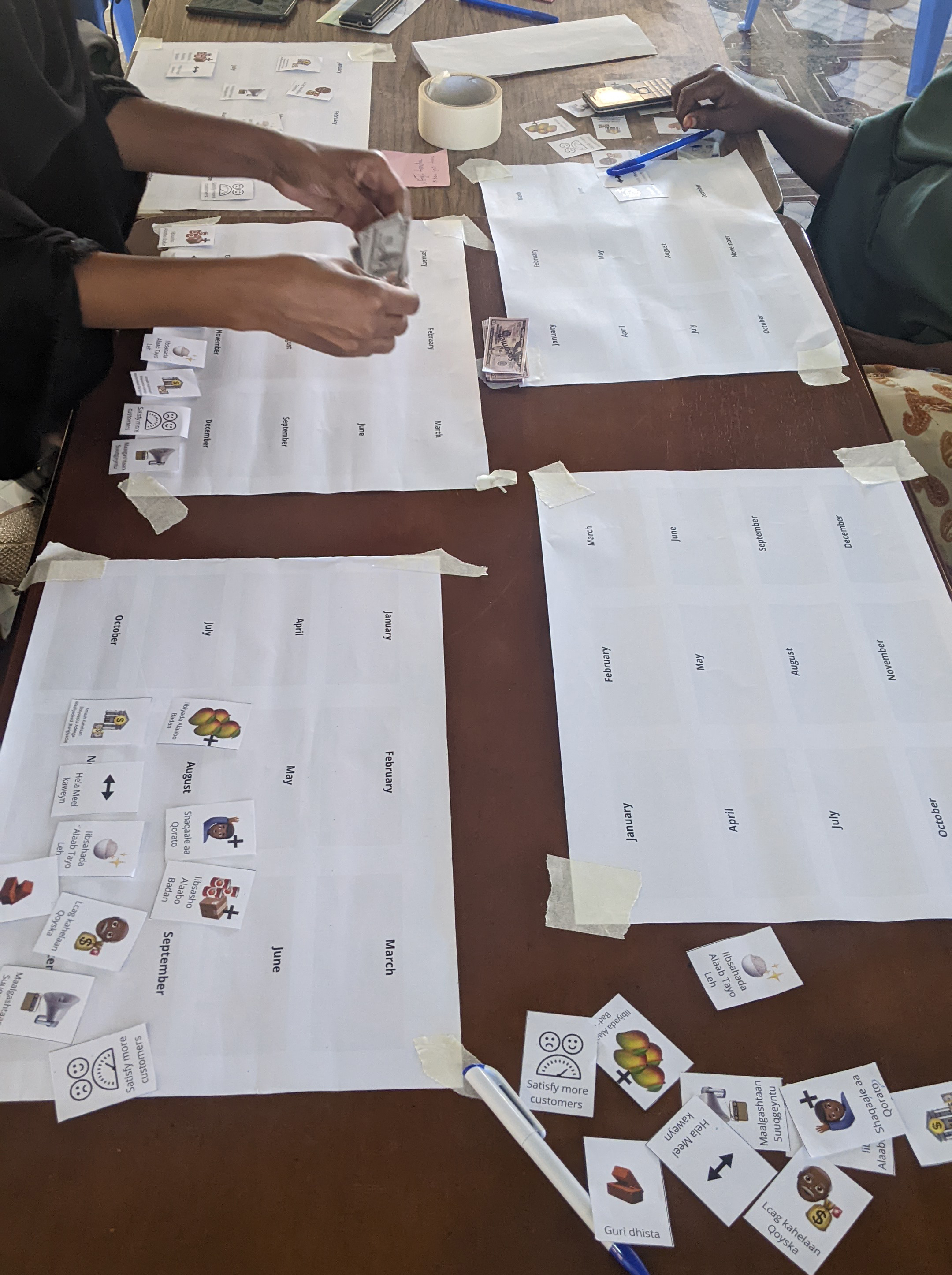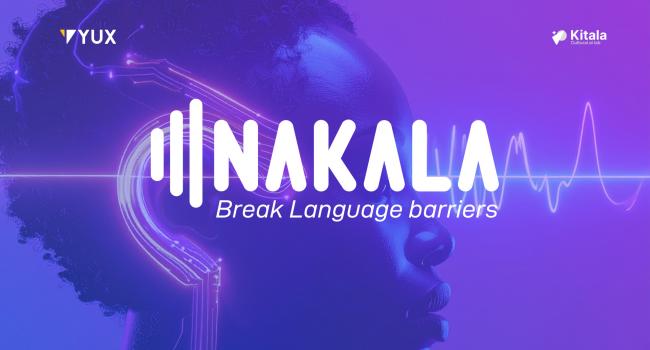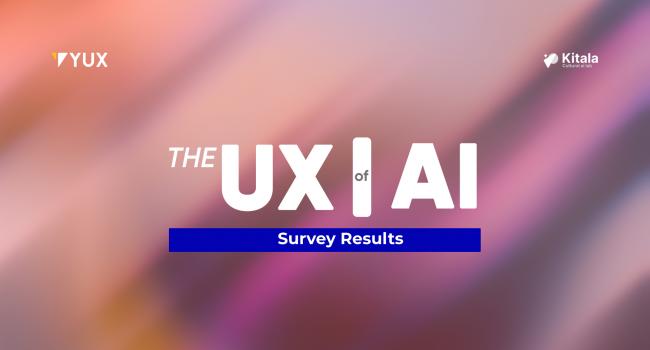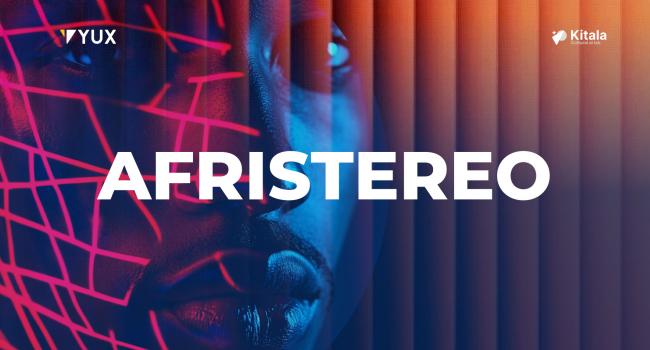In a USAID/BHA-funded research project underway in Somalia’s Puntland State, the IRC is trying to understand how to design effective and equitable market support programming. Market support is a type of humanitarian intervention that aims to ultimately benefit crisis-affected populations by improving the function of critical market systems, like those for staple foods and key non-food items.
In this project, the IRC is aiming to facilitate vendors’ access to capital – through cash grants and formal loans – to better understand the effects of these interventions, and to learn how to design such interventions through a participatory process. We asked YUX, a pan-African research and design firm, to help us engage market stakeholders to agree on key parameters for a small-scale intervention, such as which type of vendors to target for cash and which for loans, how to select specific individuals for assistance, and how to measure the program’s success.
A participatory design approach is intentional about involving stakeholders of a product or service at multiple points in the design process. By inviting users to imagine their own solutions, amend ideas or design for themselves, the rationale is that the resulting services are better tailored to their actual needs and realities. User-centered approaches innovate from traditional top-down approaches, in which services and their features are designed by people outside of the context where they will be used.
These solutions are often unsustainable because they ignore existing behaviors or community dynamics. Co-creation workshops are a common approach to participatory design that asks users of a potential service to design that service themselves. The facilitator breaks down the service into smaller components and then designs activities that allow participants to express their desires and recommendations about each component.
The facilitator aims to create a safe and engaging environment where participants are encouraged to express themselves in new and different ways. This is critical, since many populations and profiles are not used to being asked their opinion about the services intended for them. Local facilitators, or facilitators well versed in the local context, are key to a successful session, as are props, games, and other creative approaches.
Our design process consisted of several different components:
- Initial scoping and preparation.
- A mixed-methods study to better understand the market landscape.
- Co-creation workshops with vendors and local bank representatives to define the parameters of the pilot intervention.
- Additional mixed-methods research with marketgoers and vendors to complement the findings from the other steps.
- Prototyping, where the results from the different design steps detailed above were analyzed and translated into guidelines for a small-scale intervention.
On the surface, the pilot design resulting from this process resembles projects that the IRC is used to supporting. However, it incorporates several newer elements based on market stakeholders’ perspectives. For example, individual vendors will be selected for assistance through a lottery, rather than through IRC’s more typical community-based targeting process focusing on vulnerability. Further, the pilot’s grants will be delivered through a single installment, rather than the usual two.
Finally, the IRC will invite representatives from local solar energy and refrigeration companies to the pre-grant training, since vendors identified both of these services as market needs. Even the less innovative elements of the pilot design, such as whom to target and the grant transfer value, were determined based on the participatory process, which in theory should improve community acceptance of the intervention.

Future project outputs will showcase the full pilot design. Here, we’ll simply share some reflections on the design process.
- The co-creation activities were truly engaging for participants. In one exercise, participants were each given a 12-month calendar and a stack of (play) money, and then were asked to indicate when and how they would spend money accessed through grants or loans on their business by placing different amounts in different months. Such activities sustained participants’ attention and were a clever way to dig into some of our specific questions about how the intervention should be designed.
- Many of the techniques used in the co-creation workshops were unfamiliar to the local facilitators. While ensuring that researchers understand the purpose of a question or an exercise is critical and challenging in all research, achieving this is especially hard when innovative exercises are involved. This experience underscored the importance of finding facilitators who understand participatory design approaches. Where this is not possible, then a longer orientation period for facilitators, including practice co-creation sessions, could help to address areas of potential confusion before beginning the “real” workshops.
- To keep the participatory activities manageable in terms of duration and scope when there are many different questions that need to be answered, it might be appropriate to have multiple sessions where different questions are addressed rather than trying to fit everything in one overlong workshop.
- Certain recommendations from the design process – such as selecting vendors for cash grants via a lottery - were easy to address. However, the process also revealed real needs in the market – such as gaps in overall marketplace infrastructure - that were beyond the scope, timeframe, and resources of our project to address. This suggests that we should design projects with as much flexibility as possible and emphasizes the importance of clear communication about the limitations and scope of the design process with everyone involved.
Authors:
Camille Kramer-Courbariaux, Co-Founder, YUX
Kalama Hafisou, UX Researcher, YUX
Emily Sloane, Senior Technical Advisor, Cash and Markets, IRC



